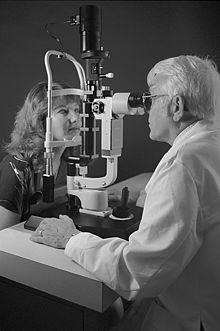Experience Personalized Care with Opticore Optometry in Chino
Checking Out the most up to date Technological Improvements in Optometry and What They Mean for Optometrists
In the ever-evolving field of optometry, current technical developments are reshaping exactly how experts approach eye care. From the precision of Optical Coherence Tomography to the nuanced insights used by AI-driven analysis tools, these developments are establishing new requirements in individual assessment and treatment. Teleoptometry is positioned to redefine availability, making sure that know-how transcends geographical constraints. As these developments penetrate the practice, eye doctors are faced with the difficulty of accepting these devices to enhance person outcomes. Yet, the concern continues to be: exactly how will these technical changes redefine the roles and responsibilities within the profession?
Innovations in Diagnostic Devices
Advancing the field of optometry, advancements in analysis tools have revolutionized the means eye treatment specialists analyze and detect visual impairments and eye conditions. The past years has actually seen considerable technical developments, making it possible for more thorough and precise analyses.
An additional key development is the introduction of sophisticated corneal topography systems, which map the surface curvature of the cornea with precision. These tools are specifically beneficial for suitable call lenses and detecting corneal disorders. Moreover, digital retinal imaging has transformed typical ophthalmoscopy, offering detailed, panoramic sights of the retina that help with comprehensive visual exams.
The development of wavefront aberrometry has also been essential, allowing the analysis of refractive errors with unmatched accuracy (Eye Doctor). This technology aids in tailoring restorative lenses and improving medical results for refractive surgical treatments. Jointly, these analysis developments encourage eye doctors to deliver superior patient care, guaranteeing early intervention and tailored treatment strategies, eventually improving aesthetic wellness end results
AI in Person Administration
Structure on the structure of advanced analysis devices, the consolidation of expert system (AI) in patient management represents a transformative jump for optometry. AI systems are progressively employed to boost effectiveness, precision, and customization in patient treatment. By examining large amounts of data, AI can identify patterns and forecast potential eye conditions, allowing eye doctors to customize interventions more properly. This capability is vital in managing persistent eye diseases such as glaucoma and diabetic person retinopathy, where early discovery and continuous monitoring are vital.
Moreover, AI-driven platforms help with streamlined client interactions and administrative procedures. Automated scheduling, digital appointments, and individualized follow-up plans not just enhance patient complete satisfaction yet also enhance time monitoring for professionals. These systems can triage people based on the necessity of their conditions, ensuring that those in vital need receive prompt attention.
Moreover, AI enhances decision-making by providing optometrists with evidence-based referrals and treatment paths. By integrating information from digital health records, AI tools provide insights that inform professional choices, decreasing the risk of errors and boosting person results. As AI continues to progress, its duty in client administration will likely expand, improving the landscape of optometric care.
Developments in Retinal Imaging
In the world of optometry, retinal imaging has actually observed remarkable technical innovations that are improving diagnostic abilities and individual treatment. Technologies such as Optical Coherence Tomography (OCT) and fundus photography have actually changed just how eye doctors examine the retina and picture. OCT, specifically, gives high-resolution, cross-sectional photos of the retina, permitting the detailed examination of its layers. This capability is very useful for early discovery and administration of problems like glaucoma, diabetic person retinopathy, and age-related macular degeneration.
Enhanced imaging techniques like OCT angiography are further refining analysis accuracy. This non-invasive technique maps blood circulation in the retina, using crucial insights right into vascular health without the demand for color shots. In addition, adaptive optics modern technology is being incorporated into retinal imaging systems to deal with ocular aberrations, providing unmatched photo quality. Such improvements help with the identification of minute retinal adjustments that might represent illness progression.
Moreover, developments in fabricated knowledge are boosting retinal imaging by making it possible for automated evaluation of large datasets. These systems aid optometrists in identifying patterns a measure of pathology, consequently improving analysis accuracy and effectiveness. Jointly, these innovations are transforming retinal imaging into a keystone of modern eye treatment, enhancing outcomes and increasing restorative opportunities.
Teleoptometry's Expanding Role
Teleoptometry is significantly ending up being an important component of eye care, driven by innovations in digital interaction and analysis tools. As optometry welcomes electronic improvement, teleoptometry facilitates remote appointments, allowing optometrists to expand their services beyond typical borders. This is specifically valuable in country and underserved locations where access to specialized eye treatment is frequently limited. By leveraging high-resolution video conferencing and advanced retinal imaging, optometrists can carry out detailed eye exams from afar, making sure timely diagnosis and treatment.
The assimilation of expert system (AI) additional enhances teleoptometry, allowing the analysis of visual information and assisting in the detection of ocular conditions such as glaucoma and diabetic retinopathy. AI-powered algorithms can rapidly analyze complicated imaging information, providing optometrists with important insights that bolster professional decision-making.
Moreover, teleoptometry supports continuity of care with smooth combination with this website electronic health documents (EHRs), allowing eye doctors to keep extensive client histories. When consulting with different professionals., this makes sure that clients obtain tailored and regular care even.
In spite of these advantages, challenges continue to be, consisting of guaranteeing information safety and managing person assumptions. Teleoptometry stands for a substantial stride towards more obtainable, effective, and patient-centered eye treatment. As modern technology evolves, its function is positioned to expand additionally.

Future Trends in Eye Treatment
A myriad of ingenious patterns is established to reshape the future of eye treatment, driven by technical innovations and the progressing requirements of people. One considerable pattern is the integration of expert system (AI) in diagnostics, which guarantees to enhance the accuracy and effectiveness of eye examinations. AI formulas can analyze large amounts of data from retinal photos, potentially discovering conditions like diabetic person retinopathy and glaucoma earlier than standard approaches.
Furthermore, individualized medicine is getting grip in optometry, with genetic screening notifying customized therapy strategies. This technique aims to maximize individual outcomes by customizing treatments to individual hereditary accounts. Wearable technology, such as smart call lenses, is likewise imminent, supplying real-time tracking of intraocular pressure or glucose levels, thus providing continual insights into systemic and eye health and wellness.
The fostering of enhanced reality (AR) and digital fact (VR) in training and person education and learning is one more emerging fad. These modern technologies use immersive experiences that can enhance understanding and skills both for eye doctors and patients. As these trends advance, optometrists must remain abreast of technical developments to supply advanced treatment, making certain better patient results and complete satisfaction in the vibrant landscape of eye care.
Verdict

Collectively, these analysis innovations encourage optometrists to deliver superior client care, ensuring very early intervention and tailored therapy approaches, inevitably enhancing visual health and wellness end results.

As these modern technologies continue to develop, site here eye doctors must adjust and incorporate them into technique, ultimately maximizing process performance and elevating the standard of eye care delivered to individuals.